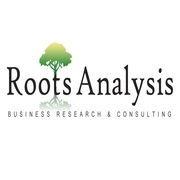In the bustling world of finance, index funds have emerged as a popular choice among investors seeking a diversified and low-cost approach to participating in the stock market. Among the various types of index funds, small cap and mid cap index funds have garnered significant attention. But what exactly are these funds, and how do they differ? Let’s delve into the world of small cap and mid cap index funds and uncover their unique characteristics.
Small Cap Index Funds: Venturing into the Realm of Smaller Companies
Small cap index funds, as the name suggests, invest in companies with a relatively smaller market capitalization, typically less than $1 billion. These funds offer exposure to a broad range of smaller companies, providing investors with diversification across different industries and sectors. The allure of small cap index funds lies in their potential for high returns, as smaller companies often exhibit rapid growth compared to their larger counterparts. However, this potential for higher returns comes with an inherent element of risk, as smaller companies are generally more volatile and susceptible to market fluctuations.
What is a Mid Cap Index Fund?
A mid cap index fund is a type of index fund that tracks a specific index of mid cap stocks. These funds typically invest in a broad range of mid cap companies, providing investors with diversification across different industries and sectors. Mid cap companies have a market capitalization between $1 billion and $10 billion.
Differences Between Small Cap and Mid Cap Index Funds
Mid cap index funds are a good option for investors who are looking for a balance of risk and reward. They offer the potential for higher returns than large cap index funds, but they are also less risky than small cap index funds. Mid cap index funds are also a good way to diversify your portfolio, as they invest in a broad range of companies.
Advantages and Disadvantages of Small Cap Index Funds
Advantages:
-
Potential for high returns: Small cap companies have the potential to grow rapidly, which can lead to high returns for investors.
-
Diversification: Small cap index funds offer diversification across different industries and sectors, which can help to reduce risk.
Disadvantages:
-
Higher risk: Small cap companies are more volatile than larger companies, which means that small cap index funds are riskier than mid cap index funds.
-
Less liquidity: Small cap stocks are typically less liquid than larger stocks, which means that they may be more difficult to sell quickly.
Advantages and Disadvantages of Mid Cap Index Funds
Advantages:
-
Moderate risk and return potential: Mid cap index funds offer a balance of risk and return, making them a good option for investors who are comfortable with some risk but do not want to take on the high risk of small cap index funds.
-
Diversification: Mid cap index funds offer diversification across different industries and sectors, which can help to reduce risk.
Disadvantages:
-
Less potential for high returns: Mid cap companies are less likely to grow as rapidly as small cap companies, which means that mid cap index funds have the potential for lower returns than small cap index funds.
-
Less liquidity: Mid cap stocks are typically less liquid than large stocks, which means that they may be more difficult to sell quickly.
Who Should Invest in Small Cap and Mid Cap Index Funds?
Small cap and mid cap index funds are a good option for investors who:
-
Have a long-term investment horizon (at least 5-10 years)
-
Are comfortable with higher risk
-
Want to diversify their portfolios
How to Choose a Small Cap or Mid Cap Index Fund
When choosing a small cap or mid cap index fund, it is important to consider the following factors:
-
Your investment goals and risk tolerance: How much risk are you comfortable taking on with your investments? What are your long-term investment goals?
-
The fund’s track record: How has the fund performed in the past?
-
The fund’s fees and expenses: What are the fees and expenses associated with the fund?
-
The fund’s investment objective: What is the fund’s investment objective? Does it invest in a specific index or a broad range of stocks?
Mid Cap Index Funds: Striking a Balance between Risk and Reward
Mid cap index funds, on the other hand, strike a balance between risk and reward by investing in companies with a market capitalization ranging from $1 billion to $10 billion. These funds offer a blend of diversification and growth potential, as mid cap companies often exhibit less volatility than smaller companies while still holding the promise of substantial growth. Mid cap index funds appeal to investors seeking a moderate level of risk and the potential for attractive returns.
Key Differences: Unraveling the Distinctions
While both small cap and mid cap index funds offer diversification and the potential for growth, they differ in their risk profiles and return potential. Small cap index funds carry higher risk but also offer the potential for higher returns, while mid cap index funds offer a more moderate level of risk and return potential. Additionally, small cap companies typically have less liquidity, meaning their stocks may be more difficult to sell quickly compared to mid cap stocks.
Choosing the Right Path: Tailoring Your Investment Strategy
The decision between small cap and mid cap index funds ultimately depends on your individual investment goals and risk tolerance. If you have a long-term investment horizon and are comfortable with higher risk, small cap index funds may be an attractive option. On the other hand, if you prefer a more moderate level of risk and return potential, mid cap index funds may be a better fit













